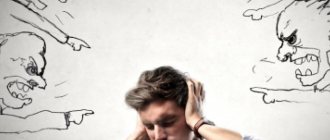Most areas of psychotherapy work with mental disorders, affecting the psyche. Various addictions, sleep or eating disorders, schizophrenia, behavioral deviations are their area of activity. And only a few are able to have a therapeutic effect not only on the soul, but also on the body. Asthenia, vegetative-vascular dystonia, obesity, diseases of the musculoskeletal system and respiratory organs, speech and hearing defects - professionally organized dance movement therapy (TDT) can cope with all this set.
What it is
Dance therapy is a branch of psychotherapy that focuses on creative self-expression through dance and movement, which promotes the integration of cognitive, emotional, social and physical aspects of a person's life. A new method of treating soul and body, which evokes only positive emotions in patients and allows them to get rid of many problems.
Even in primitive society, dancing had socio-psychological importance, performing several functions at once:
- ritual (established a connection with higher powers);
- communicative (transferred knowledge, facilitated communication between different groups);
- identification (reflected belonging to a certain tribe);
- expressive (allowed self-expression);
- recreational (relieves emotional and physical stress).
At the beginning of the 20th century, many areas of psychotherapy began to consider dance as a possible additional method to the main course of treatment for various disorders and pathologies:
- psychoanalysis - as a technique for expanding consciousness;
- individual psychology - as the education of an innate “social feeling”;
- analytical (complex) psychology - as working with the unconscious;
- body-oriented psychotherapy - as a method of treating neuroses through bodily contacts.
Dance movement therapy became a separate area only in 1946. American dancer Marion Chase, noticing how choreography lessons had a beneficial effect on students, suggested conducting similar classes in the hospital. She worked with psychotic, mute patients. She taught them to interact in a group, express feelings openly, and communicate. The success was obvious.
1966 is the year the American Dance Psychotherapy Association was born.
Today, TDT is an independent, full-fledged area with its own set of methods and techniques that allow achieving results in the treatment of patients. It is used not only for adults who find themselves in a difficult life situation and are in a state of stress or depression. There are programs for pregnant women, children, teenagers, and the elderly. There are family forms of work. Prescribed as an auxiliary tool for various diseases and disorders.
Dance therapy methods
There are several methods and techniques for working with the body:
- Attention to bodily sensations;
- Emotional motor expression;
- Analysis;
- Repeated residence.
Various dance therapy groups are organized. Clinical is the main one. It may last several years, but the effect will be guaranteed. Clinical therapy helps patients who have problems with speech and communication with other people.
There is a more difficult type that is used for people with psychological problems. The method is based on analytical psychology. Dance therapy is carried out both individually and in a group where other patients are present. This type helps to solve any specific psychological problems of a person.
Another method of dance therapy was created for those people who do not have problems, but there is something in their life that does not suit them. This helps them find their hidden self, express themselves in a new way and interact with other people.
Treatment begins with light exercises, thanks to which the body is tuned to work.
Exercises and tasks are designed so that a person can get to know himself and his body. The dance therapist is also a participant in the event, fully involved in the process along with his patients. He creates direction, gives assignments and monitors the changes that his methods bring to each patient.
The essence
The main goal of dance and movement therapy is to reveal not only a person’s creative potential, but also inner thoughts, motivations, and fears. Relieves stiffness, complexes, phobias, self-doubt, low self-esteem and many other, more serious disorders. To implement all these plans, a number of tasks are sequentially performed at different stages of working with the patient:
- realize the abilities and capabilities of your own body;
- improve social skills;
- feel, express your own “I” in the language of dance;
- learn to establish connections between movements, feelings and thoughts.
There are several basic principles on which dance-movement psychotherapy is based.
The principle of interconnection
You cannot heal the body if the soul is sick, and vice versa. TDT is aimed at their simultaneous recovery.
Principle of socialization
With the help of dance you can establish communication: with yourself, the world around you and other people.
Principle of integrity
TDT works immediately with all components of the “thoughts-feelings-behavior” triad famous in psychotherapy.
Development principle
The body is a living, constantly changing and improving organism, and not a static object.
The principle of creativity and self-realization
A person's internal resources should be used as a motivator and source of vitality.
During the classes, patients become more relaxed. By using non-verbal methods of self-expression, they extract from the subconscious problems that they sometimes cannot communicate about due to some circumstances, and sometimes they themselves are not aware of their existence. This helps psychotherapists make a correct diagnosis and select optimal treatment methods.
Indications and contraindications
Indications:
- asthenic syndrome;
- vegetative-vascular dystonia;
- impaired metabolism;
- overweight, obesity, psychogenic overeating;
- diseases of the musculoskeletal and respiratory systems at the initial stage;
- apathy, neuroses, increased conflict, negativism;
- emotional, behavioral disorders;
- phobias, complexes, low self-esteem;
- stress, depression;
- the presence of a muscular shell;
- autism;
- Disabilities, mental retardation, hearing and speech disorders in children.
It is especially often used for neuroses and depressive states, as it contributes to the overall psychological well-being of the individual, increases self-acceptance, autonomy, relieves tension, clarifies life values, and sets up a positive change in interpersonal relationships.
Contraindications:
- cerebrovascular accidents;
- productive psychopathological symptoms: delusions, hallucinations, catatonic disorders;
- suicidal tendencies;
- gross behavioral violations;
- diseases accompanied by acquired dementia: Alzheimer's, Hallervorden-Spatz, Parkinson's, Pick's, anoxia, Huntington's chorea, spinocerebellar ataxia;
- angina pectoris, cardiosclerosis, hypertension;
- shortness of breath, bronchial asthma;
- serious diseases and injuries of the spine.
Kinds
Clinical TDT
It is used not only to eliminate mental problems, but also to treat physiological diseases. Acts as an auxiliary method of therapy. Most often prescribed for children with hearing or speech impairment, with disabilities and mental retardation, for adults - when diagnosing an astheno-neurotic condition, vegetative-vascular dystonia, diseases of the musculoskeletal system and respiratory organs.
Psychotherapeutic TDT
Solves specific problems, eliminating neuroses, increased conflict, negativism, stressful conditions, obsessive thoughts, phobias and addictions. Involves various forms of work: group, individual, family. Often uses psychoanalytic methods. Requires a fairly long period to achieve a sustainable result.
Psychological TDT
Absolutely anyone who wants to loosen up, throw out negative energy, and improve their social skills can attend these classes. It is not necessary to suffer from any specific problems. It is usually carried out in groups. It is used by educational psychologists as a method of psychocorrection for minor personality and behavioral deviations in children and adolescents.
Each type can use techniques and methods borrowed from other movements and directions:
- psychoanalysis;
- psychodrama;
- existential-humanistic psychotherapy;
- transpersonal therapy.
Dance movement therapy also has its own trends:
- integrative (A. Girshon);
- “5 rhythms” - combination with meditative techniques (G. Roth);
- contact improvisation (S. Paxton).
Most often it is used in close collaboration with other areas of psychology and psychotherapy.
Stages of treatment
1. Awareness
The main task is that the patient, through dance, must realize who he really is, what he wants, his desires and values, feelings, needs, fears. In parallel, the same work is done with the body: tracking breathing, honing movements, monitoring pulse and blood pressure.
2. Expression
After awareness, the patient learns to express his emotions, feelings and desires in dance. He can express with his body what he cannot express in words. This relieves psychological and muscle tension.
3. Authenticity
With the help of spontaneous improvisations, the psychotherapist is able to penetrate into the deepest and hidden corners of the patient’s subconscious. Sometimes this stage is compared in effectiveness to hypnosis.
Methods, techniques, techniques
The type of dance movement therapy determines the set of techniques with which the specialist will help the patient get rid of problems. The most common and effective techniques:
- emotional response;
- role-playing games;
- musical movement is an educational method that promotes personal development, designed for healthy people, but successfully used in working with problem children;
- free dance;
- breathing exercises;
- kinesthetic empathy;
- pair improvisation;
- structured dance;
- joint selection of music.
The success of treatment is determined by correctly selected methods. That’s why a professional approach to solving the problem is so important here. If you only need to get rid of negative energy, you can simply turn on music at home and, without hesitation, throw out all the bad things. This will also fit within the framework of this direction. More serious disorders should be dealt with by trained specialists.
Want to work out with a professional? Then you should go to the “Live Dancing” Center for Integral Dance. Founder: Alexander Girshon. Candidate of Psychological Sciences, choreographer, professional dance and movement therapist. Presenter and author of numerous trainings and master classes. He has written many works on psychology and spiritual practices: “Stories Told by the Body”, “The Little Book of the Shadow”, “Integrative Dance and Movement Therapy”.
Indications for use
People with psychological problems, as well as healthy people who want to find inner balance, find benefit from dance therapy. Problems that this therapy can solve:
- Provides a safe outlet for negative emotions and aggression;
- Helps analyze and get rid of bad thoughts and feelings;
- Changes your attitude towards your body to a more conscious one;
- Helps to get rid of problems in communicating with strangers, thanks to the communicative experience gained in the group;
- Increases self-esteem and develops creativity.
For those who are often in a bad mood or experiencing stress, dance therapy is necessary. Therapy also helps solve psychological problems such as jealousy, dissatisfaction with family relationships, fears, phobias, feelings of loneliness, and increased anxiety.
What problems can be treated with dance therapy?
Dance therapists work with people in therapy to help them improve their psychological and physical well-being. SDT is a universal form of therapy based on the idea that movement and emotion are interconnected. The creative expression of dance therapy can strengthen communication skills and inspire dynamic relationships. It is commonly used to treat physical, psychological, cognitive and social problems.
Physical problems:
- Chronic pain
- Childhood obesity
- Cancer
- Arthritis
- High blood pressure
- Cardiovascular diseases
Mental Health Issues:
- Anxiety
- Depression
- Disordered eating
- Low self-esteem
- Post traumatic stress
Cognitive problems:
- Dementia
- Communication problems, communication skills
Social issues:
- Autism
- Aggression/violence
- Complex social interaction
- Family conflict
How effective is dance therapy?
Research has shown that dance therapy can be effective in treating mental health issues such as disordered eating, depression and anxiety. Some recent examples include:
- A study conducted by The Arts in Psychotherapy (2007) found that dance therapy had a positive impact on participants experiencing symptoms of depression.
- A study by the American Journal of Dance Therapy (2004) involving 54 students in a dance therapy violence prevention program found that aggression among participants decreased and social behavior increased.
- Research from Alzheimer's Care Today (2009) suggests that SDT may directly improve memory recall in people with dementia.
- A literature review from the American Journal of Dance Therapy indicated that DDT may be a good treatment option for children on the autism spectrum.
- Due to its social and physical components, dance movement therapy is also being considered as a treatment option for childhood obesity.
We recommend reading this interesting article: Rounding up the result: fascinating mandala therapy Mandalotherapy is considered a safe and environmentally friendly method of psychocorrection and psychotherapy. In the process of creativity, a person gains integrity and strengthens his own “I”
Key principles of TDT
- The body and mind are interconnected, so a change in one affects the other.
- Movement can express aspects of personality.
- Part of the therapeutic relationship is conveyed through nonverbal means.
- Movements can be symbolic and represent an unconscious process.
- Improvisation of movement and experimentation can lead to new sensations and perceptions of the surrounding reality.
How trainings, sessions, classes are conducted
In addition to specific principles, generally accepted, basic principles are also used for conducting sessions:
- voluntary participation;
- the “here and now” principle (the only thing that matters is what experiences the patient is experiencing at the moment);
- confidentiality;
- open expression of emotions and feelings (a trusting relationship not only between the patient and the therapist, but also between group members);
- responsibility (complete all tasks exactly);
- activity.
Most often, dance movement therapy uses a group form of classes. Usually they are lined up according to a certain pattern.
Warming up
Time: 3 minutes.
Goal: prepare the body for work, remove muscle tension.
Exercise - “Dance in parts.” Participants stand in a circle. Rhythmic music is turned on. The specialist names the parts of the body that need to be involved: head, arms, shoulders, hips, stomach, body. Next comes a discussion about who found what was easy and what was difficult. Where difficulties arise, most likely, there is a muscular shell.
Dance-motor expression
Time: 30-45 minutes.
Goals:
- awareness of one's own body;
- development of his capabilities and abilities;
- expression of feelings and emotions;
- honing social skills when working in a group.
"I'll lead you"
Participants stand in a column. The music turns on. The one who is in charge begins to move, showing various steps. The others repeat his movements. After 30 seconds, when the specialist claps, the leader goes to the end of the column. The one who was first takes on his responsibilities. Everyone must play both roles. During the discussion, everyone expresses in which position (follower or leader) they felt more comfortable.
"Fauna"
Each participant chooses any animal or bird and begins to imitate it to the music, without telling others who exactly he is copying. Before performing the exercise, the specialist sets three tasks:
- Try to make the animal recognizable to others, that is, portray it as realistically as possible.
- Find out as many other animals and birds as possible.
- Make contact with others while dancing.
While performing the exercise, the dance therapist makes observations and records the results. Why did the participant choose this particular animal? Psychologically, the difference between a wolf and a rabbit, for example, is significant. How closely does he interact with others? You can immediately distinguish between socially active and outcasts. How exactly do these contacts take place? Some express aggression through dance, others express friendliness and gentleness.
"Mirroring"
Participants are randomly divided into pairs and stand opposite each other. One shows the movements, the second performs them, mirroring them. The main thing is not to touch your partner and look eye to eye. After a minute the roles change. Within a few minutes you can create new tandems. As a result, what was liked and what was not is discussed.
"Round dance"
Participants join hands and stand in a circle. Quite rhythmic music is turned on, to which you need to move spontaneously, expressing your own “I”, bringing something individual to the collective dance. The only rule is not to open your hands. Here it is important for a specialist to see socialization skills. Someone is too passionate only about himself, not paying attention to the fact that it causes inconvenience to others (this indicates the presence of disorders). Others are shy. Still others mechanically copy the movements of their neighbor.
Hitch
Time: 5 minutes.
Goals:
- restore breathing;
- relieve tension and emotional arousal;
- consolidate the results.
Meditation. Slow, calm music comes on. On the projector screen is an illustration of a beautiful sunrise. Participants sit down randomly (preferably directly on the floor), taking a comfortable position. The dance and movement therapist pronounces affirmations about how good and calm everyone is in their souls. Audio recording may be used. At the same time, patients can move to the beat of the melody, close their eyes, even lie down - there are no prohibitions.
Analysis
This concludes the main part of the session. But not for a psychotherapist who analyzes the behavior of each participant during a lesson from the following positions:
- how he uses space and time;
- in what rhythm does he feel more comfortable?
- how he interacts with other participants;
- whether you were able to express yourself while doing the exercises;
- what is more in the movements - chaos, spontaneity or submission to some rules;
- how precise and targeted are the movements;
- what parts of the body fall out of the dance (most likely, they are hostage to the muscular shell), etc.
After a comprehensive analysis of the behavior of each participant, the therapist can reorganize the groups and schedule individual sessions.
DMT: dance movement therapy
Dance movement therapy is one of the types of psychotherapy that uses movement as the basis for the development of a person’s physical, social and spiritual life. Dance movement therapy is applicable to combat many problems, some of which are emotional and interpersonal conflicts, fear of failure, lack of communication skills, and low self-esteem. This type of therapy is also applicable to helping people who have experienced the severe loss of a loved one, rape, severe mental illness, and chronic illness. A psychotherapist uses dance to help people forget about problems, relax and assert themselves. The main advantage of dance-movement therapy in comparison with other types of therapy is that it is generally accessible, since when engaging in this type of therapy, the emphasis is not on the quality of the movements performed, but on the subtlety of a person’s expression of his own emotions during movement, the honest expression of feelings and absolute freedom of movement.
During psychotherapist sessions, patients are often unable to talk about their problem to a specialist, as a result of which the session is not beneficial, since the psychotherapist does not identify the problem and, therefore, cannot offer the patient ways to solve it. If during a session the psychotherapist feels that the situation has reached a dead end and it is impossible to “talk” to the patient, he can ask the person to perform several movements to the music. By tracking the main trends in the patient’s movements, the psychotherapist can most likely tell what his problem is.
A significant contribution to the development of dance movement therapy was made by Wilhelm Reich’s theory of the “muscle shell”. He was the first to prove that a person’s constriction (“muscular armor”) arises in childhood and is directly related to the fear of being punished, misunderstood, alienated, as well as the need for a person to constantly suppress his sexual feelings. As a result, complexes and pressures accumulate in the body and can lead to various mental and physical illnesses. Wilhelm Reich, the founder of body psychotherapy, believed that the patient’s spontaneous body movements in combination with even, measured breathing can relieve muscle tension and effectively remove clamps and blocks that prevent a person from living.
According to one version, the founder of dance movement therapy as an independent type of psychotherapy is Gabriella Rott - theater director, researcher of innovative trends in theatrical art, world-famous dance teacher, author of the famous “five rhythms” dance. Gabriella Rott's contribution to the development of dance movement therapy is invaluable - it was she who came up with special exercises that can successfully solve most of a person's psychological problems with the help of movement. The main idea of the exercises is to divide the human body into seven main zones:
- Zone number 1 – head and neck;
- Zone number 2 – shoulders;
- Zone number 3 – elbow joints;
- Zone number 4 – hands;
- Zone number 5 – pelvis and spine;
- Zone number 6 – knees;
- Zone number 7 – feet.
Now, based on this division of the body into specific zones, you can easily determine the problem - if you feel constant tension and tightness in the head and neck, it means that the current speed of your thoughts and actions is diverging from the optimal speed with which you are used to thinking and acting. Perhaps the cause of the problem lies in the overly dynamic rhythm of your life or ineffective use of your own time, followed by forcing life events. One way or another, you should stick to your usual pace of life. Feeling discomfort in zone number 2 indicates that you have taken on more responsibilities than you can handle. You should reconsider your life goals and priorities; perhaps you are not pursuing your true calling. If you feel tightness in your elbows (zone number 3), this indicates your indecisiveness and excessive modesty; tightness in zone 4 indicates your lack of self-confidence; a feeling of discomfort in the spine and pelvis (zone number 5) may indicate a certain degree of sexual complexes. The way a person bends their leg at the kneecap (zone number 6) indicates a person's readiness for potential lifestyle changes. And finally, zone number 7 is an indicator of your ambitions, what place in society you strive to occupy. If your foot completely touches the ground when walking, it means that you are determined to achieve all your life goals, your goals are objective and not contradictory.
Theoretical basis
Dance movement therapy is based on the recognition that the body and mind are interconnected: changes in the emotional, mental or behavioral spheres cause changes in all these areas. Body and mind are seen as equal forces in integrated functioning. Dance movement therapist Berger divides psychosomatic relationships into 4 categories: muscle tension and relaxation, kinesthetics, body image and expressive movement.
Awareness of feelings and appropriate emotional expression engages a person's muscle tone. People are usually unaware of their feelings if there is a high degree of bodily tension. In the process of trying to cope with stress, a person may, defending himself from fear, lose control by suppressing, repressing his feelings that exist in the body. By allowing tension to arise and holding it in the body, a person thus protects himself from direct experience and from coming face to face with his conflict. For example, the degree of tension in the shoulders and arms may be unconsciously increased to the point where that part of the body becomes cut off from feeling: it becomes dissociated. With such a person, the dance therapist may choose to work with an arm swing movement to relax the muscles associated with a particular emotional state that the patient is denying. By starting to work with muscle patterns that correlate with emotions, a person experiences (through the muscles) feelings that are heightened, become conscious in movement, and then recognized or clarified at the cognitive level. This connection that develops between physical action and internal emotional state is a consequence of muscle memory associated with feelings. With another client, the therapist can work with bodily sensations and translate their action so that emotion and movement reinforce each other. Thus movement becomes a direct expression of inner feelings. For clients who are at a more integrated level, the therapist can help them focus on a specific part of the body to identify what is being done at the bodily level, perhaps unconsciously, that is producing a particular emotional experience. In this situation, the therapist can help the client verbally explore associations, images, fantasies, or memories that arise in the mind as the motor response in the body connects with its emotional components.
Every thought, action, memory, fantasy or image causes some new muscle tension. People can be helped to discover how they change, alter, redirect, destroy or control these subtle muscle sensations that influence the experience and expression of feelings. This process is similar and corresponds to the defense mechanisms of the ego. In his work on character formation, Reich shows how an identical process becomes evident in both physiological and psychological spheres. He's writing:
“In melancholic or depressed patients, speech and facial expression are frozen, as if every movement overcomes resistance. In a manic state, on the contrary, impulses suddenly cover the whole body, the whole person. In catatonic stupor, mental and muscular rigidity are identical, and only the end of this state returns both mental and muscular mobility.”
To be aware of your own feelings, some degree of body awareness is necessary. The kinesthetic process makes it possible to gain direct experience from muscle activity. Changes in body position and balance, motor coordination, and movement planning involve both the perception of external objects or events and our motor response. This kinesthetic sensation, critical to the performance of everyday tasks, plays a leading role in shaping our own emotional awareness and responses. There are two ways to develop emotional awareness:
The first is learning the correct label or word that corresponds to a given emotional state. This learning begins in infancy and early childhood. To understand how such learning occurs, it is enough to remember how a baby is picked up and asked: “Why are you so sad?” or they say: “You’re hungry, right?” Our nonverbal behavior communicates, says something. Other people recognize our experiences and put them into words so they can identify and later talk about them.
The second way to develop emotional awareness is based on recognizing and interpreting the motor actions of other people. In his study of how emotions communicate, Kline points out that each emotion has a specific psychological code and a characteristic brain pattern, controlled by the central nervous system and biologically coordinated, a process that is the same in all people. In addition, the experience of different emotions and the corresponding muscle reactions is also universal, universal. Therefore, we are able to perceive and recognize the emotional states of others. Our emotional responses to other people usually come from our interpretations of the bodily actions and reactions of others, perceived, recognized and experienced by us on a kinesthetic level. Kinesthetic empathy, which is largely unconscious, plays a role in verbal and nonverbal communication between people.
The next concept is body image, it refers to the relationship between the soul and the body, i.e. the psychosomatic relationship. In an early synthesis of body image research, Schilder states: “Body image is the picture we have in our heads of our own body, that is, the way in which the body appears to us.” He views body image as something in a constant state of development or change. Movement causes changes in body image. The way body parts are connected, awareness of bodily sensations such as breathing, and awareness of muscle activity are just a few examples of how kinesthetic sensations can contribute to awareness and development of body image. Machler's work on emotional development and “psychological birth” also supports the evidence that awareness of the self as a separate physical reality, an entity, is necessary before the process of individuation can occur.
The self-image we have influences us and is influenced by all our perceptions, experiences and actions. A person who perceives himself as weak and fragile is different from one who perceives himself as strong. Just like when a child is treated as if he is stupid, his body image will absorb his reactions to people's impressions and to his own. Schilder writes:
“The positional model of our own body is related to the positional model of other people's bodies. People's positional models are interconnected. We feel images of other people's bodies. Experience, the experience of one's own body image and experience, the experience of other people's bodies are closely intertwined. Just as our emotions and actions are inseparable from our body image, so too are the emotions and actions of others inseparable from their bodies.”
Focusing specifically on the relationship between movement change and psychological change in dance therapy, Chace states: “Since movement affects body image and mental attitude change, if you work with the feeling of body image distortion in action, it will change your mental self-perception, attitude towards oneself.”
The fourth area that deals with the relationship between mind and body, and which most dance therapists focus on, is expressive movement. Emotional expression is expressed through the body. Body posture, gestures, and breathing patterns are a few examples of movement behaviors that are studied within expressive movement. It is the qualitative aspect of movement, how it occurs rather than static positions, that reflects individual self-expression. Allport and Vernon write:
“...no action can be defined as expressive. Every action has both inexpressive and expressive aspects. It has... its own adaptive... character, as well as its own individual character. Opening a door, for example, this task prescribes certain coordinated movements consistent with that goal, but also allows a certain amount of freedom for individual style in executing the prescribed movements. The confidence, pressure, precision or patience with which a given task is performed has its own characteristics. Only these individual characteristics are called expressive.”
Expressive behavior is the motor manifestation of emotions interconnected in a functional system. Clines views expressive movement as an emotional state that is being expressed. His research into how emotions are experienced and communicated helps explain how dance movement therapy works with feelings and their manifestations in action. If we perform an action or gesture that correlates with an emotion (eg, angrily kicking a rock), we begin to experience the corresponding visceral response generated. If this action is repeated several times, the intensity of the emotional experience will intensify. To encourage the experience and expression of emotions, a dance movement therapist works with movement patterns associated with emotions. For example, to work with anger, a therapist might suggest making a fist with your hands, squeezing them tightly, and shaking them in front of the other person. There may be other instructions: stand firmly in place, tensing your whole body. With fist shaking, the movement generates a more specific bodily experience of an emotional state. This provides feedback and an interaction loop between expressive action and emotional experience.
Emotions can be caused by a real situation (for example, sadness when you lose a friend), the perception of a person. emotional state (e.g., being infected with fear by seeing another person's fear), in an imagined fantasy situation (e.g., remembering or imagining being stuck in an elevator), or perceiving a fantasy state in another person (e.g., conveying the experience of pain or guilt demonstrated by actor).
The therapist's use of imagination, action, or emotion thus helps to crystallize and integrate the physiological and the psychological.
Methods of body-oriented therapy
- Body-oriented therapy
- Wilhelm Reich therapy
- Bioenergetics by Alexander Lowen
- Moshe Feldenkrais Therapy
- F. Matthias Alexander method
- Ida Rolf Therapy (Rolfing)
Special cases
For preschool children
Dance movement therapy is often used to correct emotional and behavioral disorders in preschool children. Main goals:
- elimination of emotional discomfort;
- increased activity and independence;
- implementation of the creative component;
- elimination of secondary personal reactions: aggressiveness, hyperexcitability, suspiciousness, anxiety;
- correction of the level of self-awareness and self-esteem;
- formation of a sense of rhythm;
- improving socialization skills.
The effectiveness of therapy in working with problem children of preschool age is due to its abilities:
- identify rhythmic reflexes;
- adapt the body to auditory stimuli;
- normalize the activity of the central nervous system (hyperexcited ones calm down, slow ones become more active);
- help in eliminating speech defects through the connection of motor and speech analyzers;
- develop voluntary facial motor skills.
Recommended exercises: “Body Jazz” (there are individual and pair options), “Dance-vibration”, “Fire-ice”, “Sprout”, “Pump and inflatable doll”, “Smiling sun”, “Jungle”.
For children with speech disorders
The close connection between motor and speech analyzers allows the use of dance therapy as an auxiliary method in the work of speech therapists. Goals:
- master the “language of movements”;
- learn to express emotions through dance;
- develop perceptual and mnemonic capabilities;
- relieve muscle tension;
- expand your communication skills.
Recommended exercises: “Ri”, “Sliding movement”, “Rhythmic dictation”, “Canon”, “Theater ABC”.
For hearing impairment
Studies have shown the positive effect of dance movement therapy on the auditory analyzer. Children with hearing impairments usually have difficulty communicating verbally. Dance minimizes discomfort, removes psychological barriers, and eliminates feelings of stiffness and awkwardness. Through movement, the resource capabilities of the body are activated: in addition to working with the psyche, the hearing organs develop with constant contact with musical material.
As practice has shown, in 12 lessons lasting 1 hour, children with hearing impairments were able to get rid of not only stiffness and complexes, but also improved their physical capabilities - they began to hear better.
Main goals and objectives
Dance therapy as a method of psychocorrection has long proven itself in practice from the best side and is applicable for people of all ages. Work in this direction is especially important for preschool children. Studying at school involves changing the usual rhythm of life, establishing clear norms of behavior and rules. Such a stressful situation brings up a lot of emotions that need to be dealt with. The psychology of self-improvement and self-expression in dance allows you not only to cope with this task, but also to prepare.
One of the most important components of this methodology is the dance game. Exercises in class are presented in a playful way. In combination with dance, it helps to open up your imagination, improvise freely, processing intense feelings and emotions into movements.
Music complements dance therapy by promoting the expression of joy. Such games awaken and cultivate positive personality traits and develop it. In a dance without words or facial expressions, you can show all feelings: aggressiveness and anger, sadness and pain, joy and delight.
Thus, the goals of dance therapy are:
- relieving psycho-emotional stress;
- splashing out of energy;
- removing your fear and aggressiveness;
- awareness of one’s own “I” in the proposed circumstances;
- replaying your external and internal sensations;
- sharing exciting situations;
- awakening positive emotions;
- development of communication skills and creative abilities (improvise, imagine),
- ability to think logically and take initiative;
- team unity.
Main goals
- awareness of the body by the participants of the lesson;
- formation of awareness of the possibilities of using the body, means for expressing feelings;
- learning to establish the relationship between emotions and movements, exploring feelings through dance expression and releasing them.











